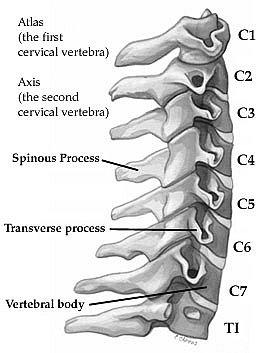

Allograft is bone from an organ donor, collected and stored by a bone-bank.It is relatively painless compared to an iliac crest graft. BMA (bone marrow aspirate) is your living bone marrow, collected with a syringe from the hip (iliac bone) or vertebra.The disadvantage is the pain in your hipbone. The harvested bone is about a half inch thick. It can be collected from drillings during the surgery or taken from the hip as an iliac crest bone graft. The marrow contains bone-growing proteins. Each type has advantages and disadvantages, especially if you smoke or have poor bone health (osteoporosis). These materials are placed within the remaining disc space and act as a kind of mortar between the bones as your body heals. Autograft is the gold standard for rapid healing and fusion, but the hip incision can be painful and at times lead to complications. Your surgeon will also explain the various types of bone graft. Fusion is performed only after other treatments have been explored. Consider all the risks and benefits as you make your decision. If you are a candidate for ACDF, the surgeon will explain your options. Most herniated discs heal after a few months of nonsurgical treatment. Pain, weakness of the arms / legs, and walking problems arise from spinal cord compression. CSM is caused by bulging discs, enlarged facet joints and thickened ligaments. Cervical stenosis / myelopathy: narrowing of the canal through which the spinal cord passes.These changes can lead to canal stenosis, bone spurs, or disc herniation (Fig. As the disc thins, the vertebrae bones rub and pinch the nerves. Degenerative disc disease : the drying and shrinkage of discs with age.Pain and swelling occurs when this material presses on a nerve. Herniated disc : the rubbery center of the disc can bulge or rupture through a weak area in the wall (annulus).symptoms that have not improved with physical therapy or medicationĪCDF may be helpful in treating the following conditions:.significant weakness in your hand or arm.You may be a candidate for discectomy if you have: Talk with your surgeon about whether ACDF or artificial disc replacement is appropriate for you. Outcomes for artificial disc compared to ACDF are similar, but it is not for those with facet joint arthritis or weak bones. Similar to knee replacement, the artificial disc is inserted into the damaged joint space and preserves motion, whereas fusion eliminates motion. If more than two levels are fused, you may notice limits in turning your head and looking up or down.Īrtificial disc replacement has emerged as an alternative to fusion. If only one level is fused, you may have similar or even better range of motion than before surgery. The instrumentation and fusion work together, similar to reinforced concrete.Īfter fusion you may notice some range of motion loss, but this varies according to neck mobility before surgery and the number of levels fused. After 3 to 6 months, the bone graft should join the two vertebrae and form one solid piece of bone. Following surgery, the body begins its natural healing process and new bone cells grow around the graft. The bone graft and vertebrae are fixed in place with metal plates and screws. The graft serves as a bridge between the two vertebrae to create a spinal fusion. To prevent the vertebrae from collapsing and rubbing together, a spacer bone graft is inserted to fill the open disc space. Depending on your particular symptoms, one disc (single-level) or more (multi-level) may be removed.Īfter the disc is removed, the space between the bony vertebrae is empty.

Surgery from the front of the neck is more accessible than from the back (posterior) because the disc can be reached without disturbing the spinal cord, spinal nerves, and the strong neck muscles. By moving aside the neck muscles, trachea, and esophagus, the disc and bony vertebrae are exposed. The surgeon reaches the damaged disc from the front (anterior) of the spine through the throat area. 1).ĭiscectomy literally means "cutting out the disc." A discectomy can be performed anywhere along the spine from the neck (cervical) to the low back (lumbar). Wear and tear on discs can cause herniation or thinning that pinch the nerves (Fig. Healthy discs act as a flexible cushion between bones, allowing your neck to bend and rotate. What is an anterior cervical discectomy & fusion? The pinched spinal nerve becomes swollen and painful. Bone spurs may develop which can lead to a narrowing of the nerve root canal (foraminal stenosis). Tears in the disc annulus can allow the nucleus material to escape and compress the spinal cord causing numbness and weakness. (top view of vertebra) Degenerative disc disease is the thinning and drying of discs.


 0 kommentar(er)
0 kommentar(er)
